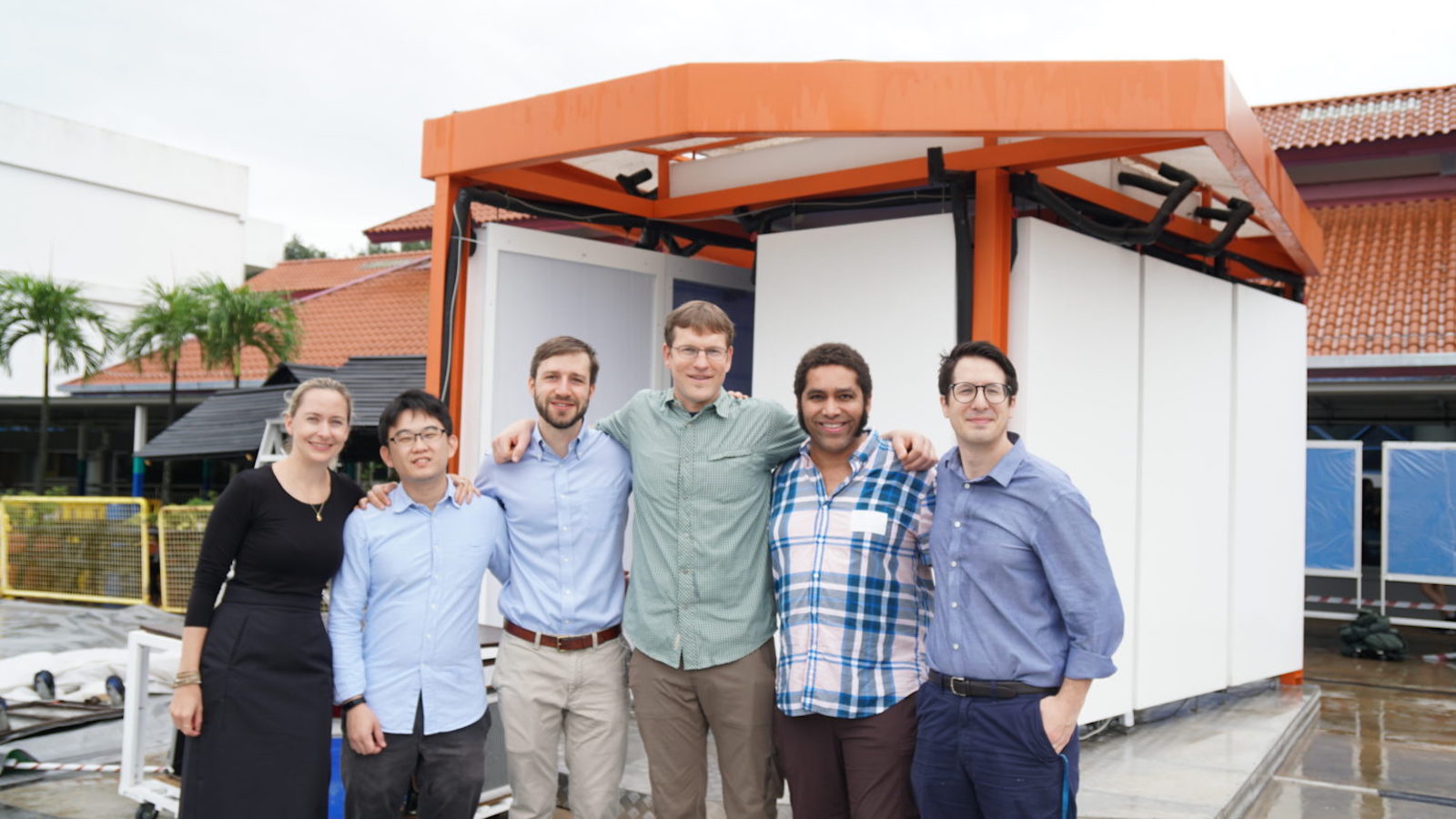Cold Tube: a paradigm shift to cooling
Can we keep people cool and comfortable without air conditioning? SEC researchers present a paradigm-shifting approach to thermal comfort without the environmental cost of air-conditioning.

In this thermal-comfort study, Singapore-ETH Centre researchers, Dr Eric Teitelbaum and Lea Ruefenacht, and their collaborators developed a radiant cooling system that could make people in the hot and humid tropical climate of Singapore feel cool and comfortable outdoors in spite of the warm ambient air. The project was led by alumni from the Future Cities Laboratory, including Asst Prof. Adam Rysanek (University of British Columbia), Asst Prof. Forrest Meggers (Princeton University) and Dr Jovan Pantelic.
They present an alternative to air-conditioning, demonstrating how people exposed to chilled surfaces could be cooled when heat is transferred away from their bodies to the chilled surfaces through thermal radiation. The researchers share results from a demonstrative radiant cooling pavilion in the paper external page Membrane-assisted radiant cooling for expanding thermal comfort zones globally without air conditioning published in Proceedings of the National Academy of Sciences of the United States of America (PNAS).
This work provides proof-of-concept solutions for a transient thermal-comfort scenario. The team constructed Cold Tube—an outdoor radiant-cooling pavilion in Singapore—which surfaces are covered with cold water tubes chilled to 17 to 20 °C (below dew point). In this setup, a thermally transparent membrane is used to prevent unwanted air cooling and condensation – both of which are key challenges in deploying radiant cooling panels without humidity control in tropical environments such as Singapore.
Test subjects who experienced the pavilion reported a “satisfactory” thermal sensation 79% of the time, even though the air temperature is about 30°C, at about 66.5 per cent relative humidity and with low air movement. The Cold Tube is a step forward for demonstrating that more heat can be shifted away by thermal radiation to produce comfortable conditions than had been presented in previous studies; and that radiation and convection can be separated for comfort conditioning for the tropics.
This thermal-comfort study conducted in Singapore in January 2019 is a strong preliminary investigation into the applicability of such a membrane-assisted radiant cooling technology. Applied at scale, it might reduce cooling-related energy demand worldwide, and therefore, reduce the huge environmental cost of air-conditioning.
The team is currently using the data collected in Singapore to update their projections of the Cold Tube’s effectiveness in indoor spaces globally. They plan to demonstrate a commercially viable version of the technology by 2022.
Eric Teitelbaum, Kian Wee Chen, Dorit Aviv, Kipp Bradford, Lea Ruefenacht, Denon Sheppard, Megan Teitelbaum, Forrest Meggers, Jovan Pantelic, Adam Rysanek, Membrane-assisted radiant cooling for expanding thermal comfort zones globally without air conditioning, Proceedings of the National Academy of Sciences Aug 2020, 202001678, DOI:external page 10.1073/pnas.2001678117